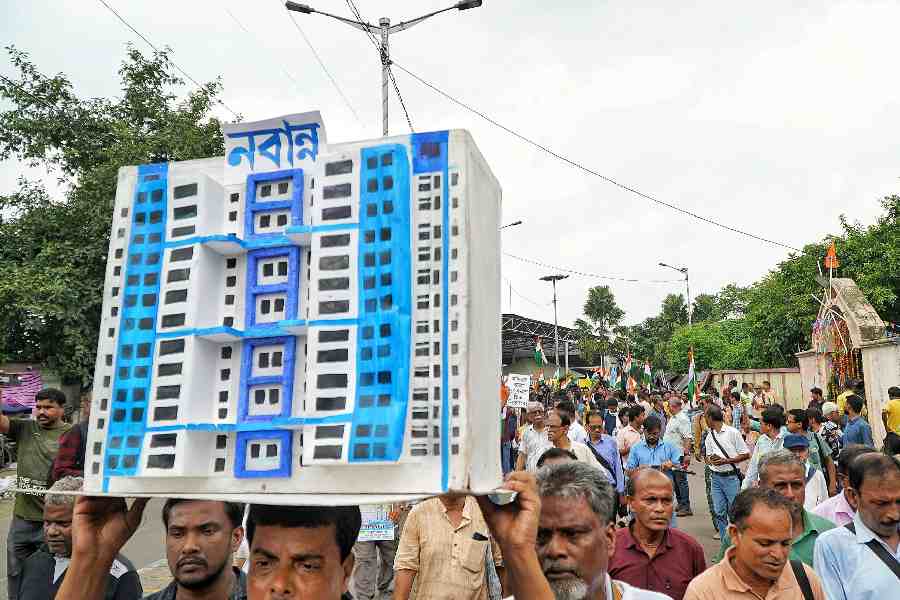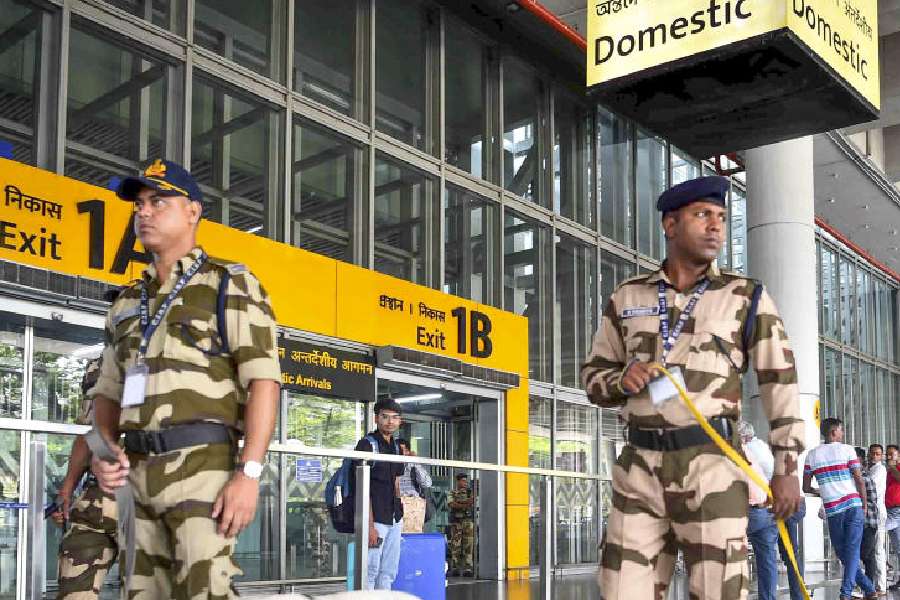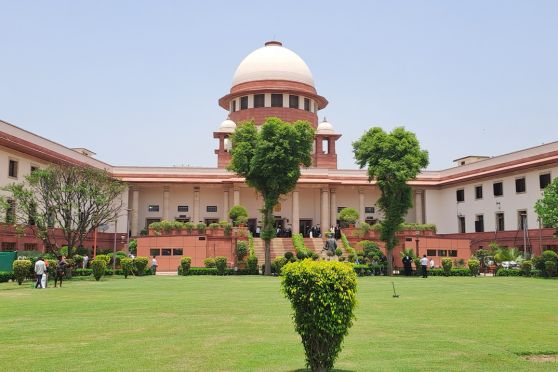
shows eczema spots on his skin. Picture by Deepak Kumar
Yadav versus Yadav in Maner, just as it has been for two-and-a-half decades. Sporting different party colours at different times, Bhai Virendra and Srikant Nirala - both Yadavs - have squared off for 25 years in this constituency 21km west of Patna. This time too, they are locked in a direct battle.
Bhai Virendra is trying to win the seat for the RJD for what would be a fourth consecutive term for the party. Nirala is trying to snuff out the lantern - the RJD symbol - in this Yadav-dominated constituency with support of the traditional forward-caste votes of the BJP and a section of backward caste votes owing to NDA alliance partners including HAMS and the LJP. Not to forget, Nirala claims a sizeable proportion of Yadav votes; he won this seat for the RJD in two out of the last three polls.
"Yadav votes would be divided between Bhai Virendra and Nirala," said Dilip Chouudhary, a shopkeeper at Byapur on the Danapur-Maner state highway. "The EBC votes would be the deciding factor."
BJP national president Amit Shah addressed an election meet in support of Nirala at Maner's Gandhi Maidan on October 20.
"Nirala is considered a very strong leader in Maner owing to his rich political background," said Dev Sahay Singh, a retired police constable at Ram Nagar village. "His father, Ram Nagina Singh, and his mother, Rajmati Devi, represented Maner as MLAs. He has a clear-cut edge with his Yadav votes, along with the forward caste votes of the BJP."
Arvind Kumar Singh of Nayka Tola differed: "No matter what they say on your face, I know that Yadavs in Maner would vote for the RJD. Around 75 per cent of the Yadavs would vote for Bhai Virendra this time. Besides, he has done a lot of work in the constituency including construction of concrete roads. He is also more approachable than Nirala."
A few concrete roads have come up and Bihta has been nursed as an industrial hub, but two other things have remained constant in Maner: Its famous laddoo, and a silent killer in the ground water in the diara (sandy) areas along the Ganga. Thousands of people living in over a dozen villages in the riverine area in Maner are exposed to high levels of arsenic in the water they drink and use to prepare food and irrigate the food crops.

"We are aware that the water from the tubewells or handpumps is contaminated with arsenic but we don't have a choice as the government is not providing us pure water, and we do not have money to install arsenic-removal filters," said Priyesh Sinha, a resident of Ram Nagar village, who is suffering from eczema, a skin disease, for the past six years.
Such diseases are common here, thanks to the arsenic, which has been identified as carcinogenic (cancer-causing) by the World Health Organisation. The chemical has been associated with developmental defects, neurological and cardiovascular disease, neurotoxicity, and diabetes.
"Arsenic is referred to as slow poison," said Ashok Ghosh, professor-in-charge at the department of environment and water management, AN College, Patna. Ghosh and his team are working on identification and mitigation of arsenic in Bihar for over a decade. "The effect of arsenic is identified after its continuous intake in the human body over a period of 5-7 years and there is no cure for arsenic once its effects are visible on human body," Ghosh added.

People in Maner said that the state government had in 2008-09 come up with a piped-water supply scheme to address the arsenic problem. All that remains of the scheme today are hundreds of big pipes dumped at various places, at times protruding from the soil. Tubewells were also proposed for supplying arsenic-free water by digging deep in the water table. But land for digging such tubewells and erecting overhead water tanks could not be made available, leading to collapse of the project.
Several other initiatives, including installation of water purification equipment by IIT-Bombay, handpumps by the public health engineering department (PHED) and the British aid agency UK AID have also succumbed to poor maintenance.
The issue is not limited to Maner. Recent studies have shown that ground and surface water, soil and even food crops in up to 18 out of 38 districts in Bihar are contaminated with arsenic.
• Maner votes on October 28











